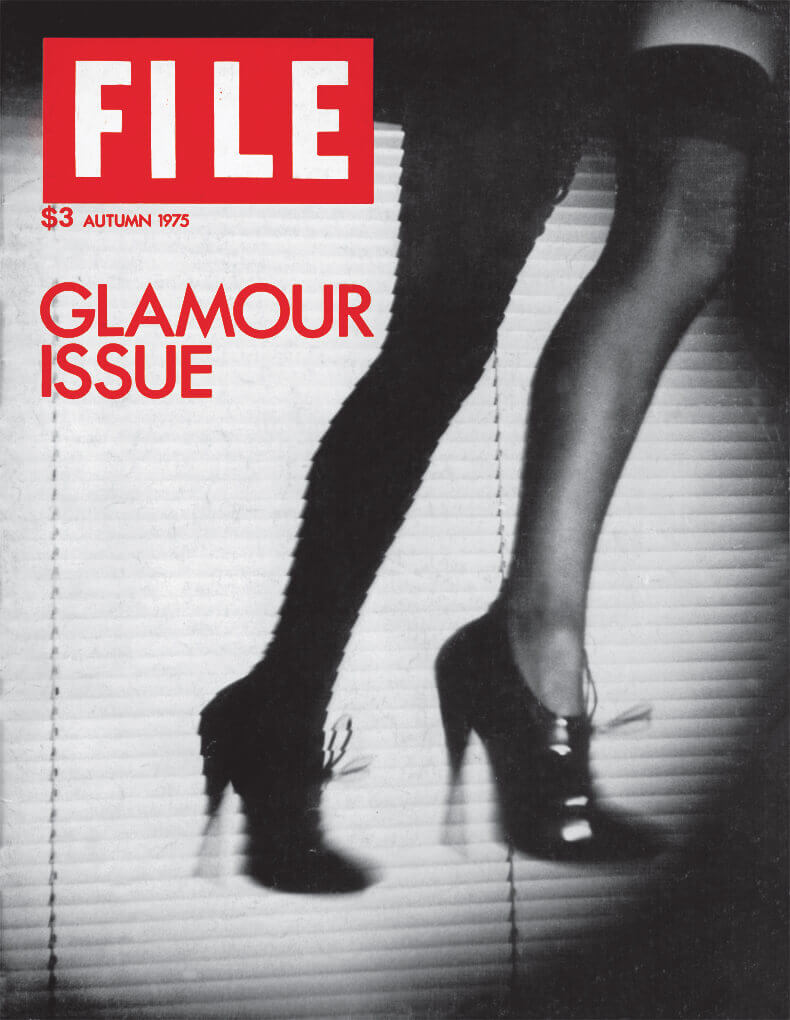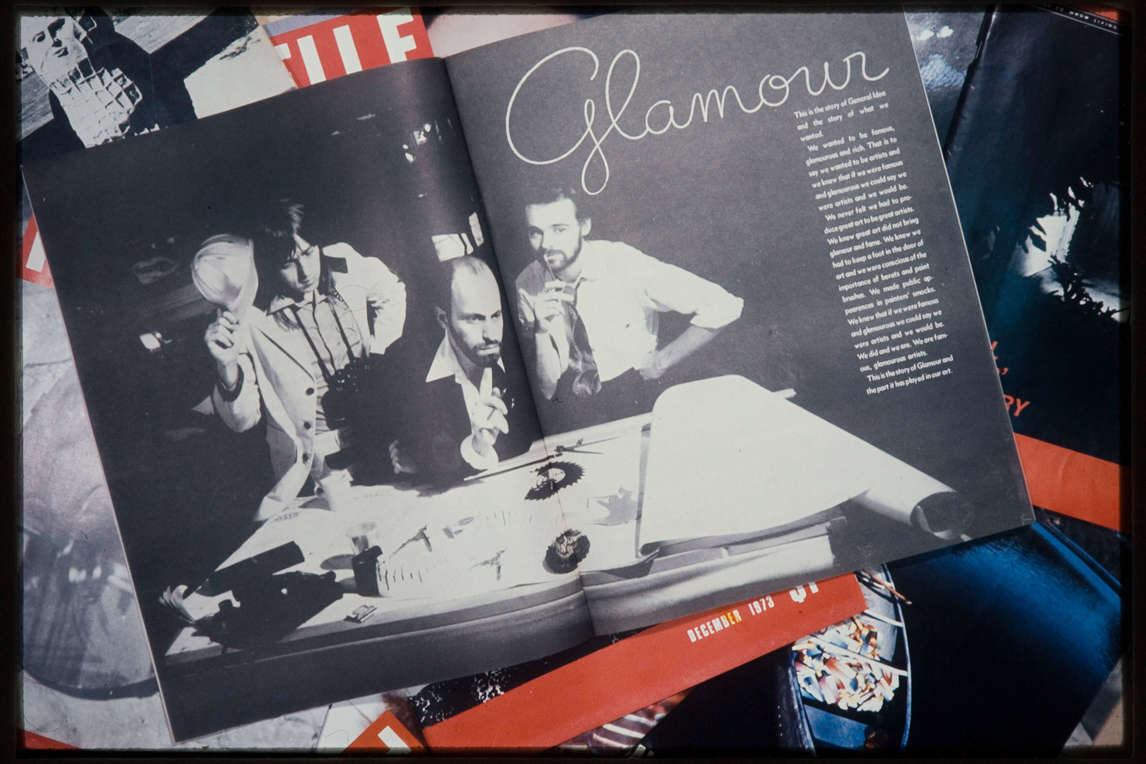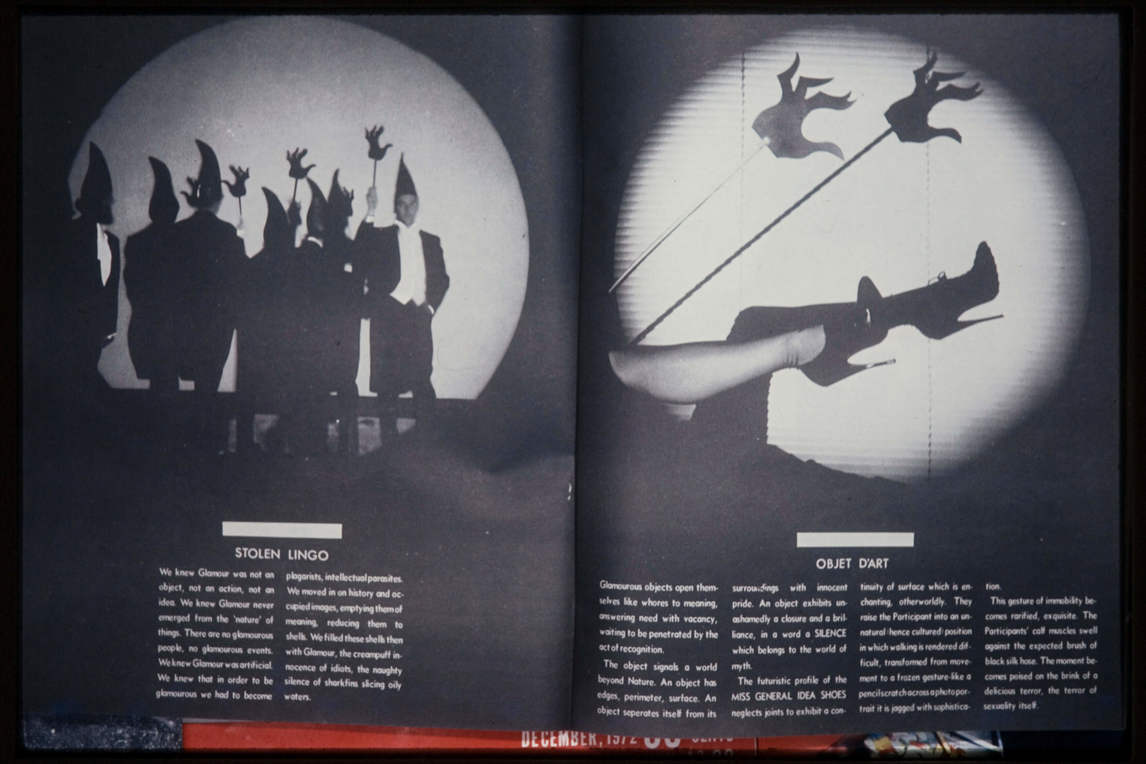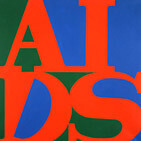Glamour Issue 1975

General Idea, FILE Megazine, “Glamour Issue,” vol. 3, no. 1, 1975
Web offset periodical, eighty pages plus cover, black and white reproductions and eight-page insert by Image Bank
Various collections
Created by General Idea in 1972, FILE Megazine ran for twenty-six issues, ending in 1989. Superficially, the publication mimicked the well-known American magazine LIFE, though its content did not. The title FILE was a clear pun on LIFE, as well as an overt reference to the notion of art imitating life and life imitating art. In the artists’ words, FILE was “a cultural parasite carried along in the mainstream blood stream of commercial distribution systems and subtly altered the body of its host.” Filled with “wisecracks, wordplay, and cryptic layers of fact and fiction,” the publication provided a broad, multifaceted platform through which General Idea could further their own self-invented mythology.
The “Glamour Issue” of FILE illuminates, in the group’s words, “the story of glamour and the part it played in our art.” In the issue’s editorial, the members of General Idea directly address the slippage between fact and fiction: “All myth and no content. Or is it vice versa?”—this assessment reflecting General Idea’s practice as a whole.

The issue’s central article is “Glamour,” a dense fourteen-page manifesto written by the artists. It opens with a portrait of the trio as architects. The imagery that follows includes collages by the group (a favourite medium), as well as General Idea projects such as Artist’s Conception: Miss General Idea 1971, 1971. The article also plays with text from philosophical and literary works by authors such as Roland Barthes (1915–1980), William S. Burroughs (1914–1997), and Gertrude Stein (1874–1946), who were key influences on the trio. General Idea altered these text sections arbitrarily; for example, excerpts from Barthes are rewritten substituting the word “glamour” for the word “myth.” The appropriation of their work is justified by General Idea’s assertion that glamour necessitates theft: “We knew that in order to be glamorous we had to become plagiarists.”

General Idea acknowledged that glamour was a taboo topic in 1975, despite their interest in embodying it and employing it for their own needs: “The ‘Glamour’ article…was written at a time when, within the art scene, it was in extremely bad taste to talk about glamour. It was the last subject in the world that anybody would mention. And the same with money and fame.” The “Glamour Issue” typifies the way General Idea adopted existing concepts, transforming them through humour and irony.

 About the Author
About the Author
 More Online Art Books
More Online Art Books
 Acknowledgements
Acknowledgements